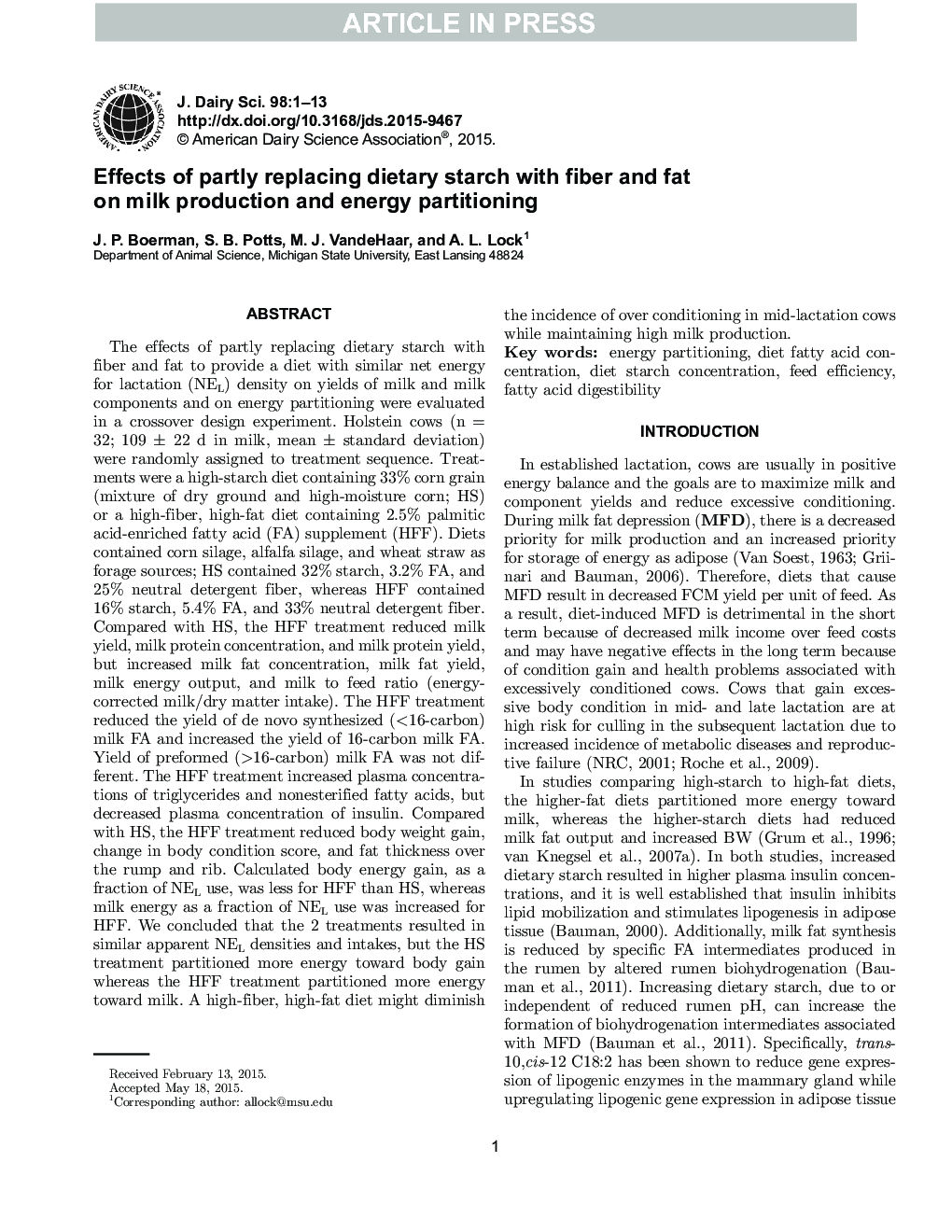| Article ID | Journal | Published Year | Pages | File Type |
|---|---|---|---|---|
| 10974949 | Journal of Dairy Science | 2015 | 13 Pages |
Abstract
The effects of partly replacing dietary starch with fiber and fat to provide a diet with similar net energy for lactation (NEL) density on yields of milk and milk components and on energy partitioning were evaluated in a crossover design experiment. Holstein cows (n = 32; 109 ± 22 d in milk, mean ± standard deviation) were randomly assigned to treatment sequence. Treatments were a high-starch diet containing 33% corn grain (mixture of dry ground and high-moisture corn; HS) or a high-fiber, high-fat diet containing 2.5% palmitic acid-enriched fatty acid (FA) supplement (HFF). Diets contained corn silage, alfalfa silage, and wheat straw as forage sources; HS contained 32% starch, 3.2% FA, and 25% neutral detergent fiber, whereas HFF contained 16% starch, 5.4% FA, and 33% neutral detergent fiber. Compared with HS, the HFF treatment reduced milk yield, milk protein concentration, and milk protein yield, but increased milk fat concentration, milk fat yield, milk energy output, and milk to feed ratio (energy-corrected milk/dry matter intake). The HFF treatment reduced the yield of de novo synthesized (<16-carbon) milk FA and increased the yield of 16-carbon milk FA. Yield of preformed (>16-carbon) milk FA was not different. The HFF treatment increased plasma concentrations of triglycerides and nonesterified fatty acids, but decreased plasma concentration of insulin. Compared with HS, the HFF treatment reduced body weight gain, change in body condition score, and fat thickness over the rump and rib. Calculated body energy gain, as a fraction of NEL use, was less for HFF than HS, whereas milk energy as a fraction of NEL use was increased for HFF. We concluded that the 2 treatments resulted in similar apparent NEL densities and intakes, but the HS treatment partitioned more energy toward body gain whereas the HFF treatment partitioned more energy toward milk. A high-fiber, high-fat diet might diminish the incidence of over conditioning in mid-lactation cows while maintaining high milk production.
Related Topics
Life Sciences
Agricultural and Biological Sciences
Animal Science and Zoology
Authors
J.P. Boerman, S.B. Potts, M.J. VandeHaar, A.L. Lock,
